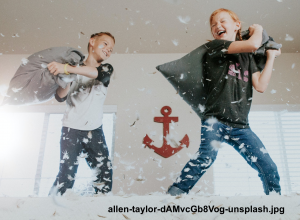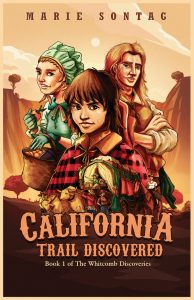I once asked New York Times bestselling author Melanie Benjamin her top tip for writing historical fiction. She gave me two: write to entertain, and connect with readers on issues in the past that resonate in the present. Although Benjamin writes for adults, her advice proves equally applicable to middle grade historical fiction authors.
New York Times bestselling author Lisa Gardner answers this question by focusing on a paraphrase of Hemingway’s Iceberg Theory. “Research the iceberg, then write the tip.” Writers of middle grade historical fiction would do well to keep these three suggestions in mind.
- Write to entertain.
- Write to connect the past with the present.
- Write the tip.
Write to Entertain

In order to entertain, MG writers must first provide readers with a strong protagonist—one generally two years older than the age of the author’s target audience (8-12-year-olds). The story should embroil this sympathetic character in historical situations that compel the protagonist to respond. Unlike YA or adult stories, these MG characters are not out to “save the world.” They make decisions based on their immediate circumstances with a focus on friends and family.
The Bicycle Spy provides a good example. Twelve-year-old Marcel discovers that his friend’s entire family is in imminent danger. He knows he can help, but it will involve a risky bicycle ride to pass along covert information. When his plans go awry, he must keep pedaling and think quickly… because his friend, her family, and his own future hang in the balance.
Enable Readers to Connect the Past with the Present
In addition to crafting an entertaining story that involves the main character’s friends and family, middle grade authors must also connect events in the historical novel with situations experienced by their target audience. According to Linda Levstick, a professor at the University of Kentucky, embedding history within this kind of a narrative arc will help middle graders make sense of, personalize, and remember historical events. Evoking readers’ emotions helps young readers forge important connections.
All middle grade readers have experienced loss of some kind. They also know how it feels when adults have them do things they’d rather not do. Tapping into these common emotions can bring historical characters to life. The past becomes more memorable when readers connect historical events with their own experiences.

For example, in my middle grade novel, California Trail Discovered, orphaned thirteen-year-old Daniel and his ten-year-old stepsister Hannah (fictional characters) must travel West with their guardian, Jim Savage (a historical figure). Daniel doesn’t want to go. He wants to stay in Illinois and solve the mystery of his parents’ deaths. Forced to join Jim’s wagon train and travel to California, Daniel and Hannah become friends with Virginia Reed, a historical figure and member of the Donner Party. Together, Daniel, Hannah, and Virginia face the trials and triumphs of life on the trail.
Write the Tip

Lisa Gardner’s advice to research the iceberg (the history surrounding an event you want to bring to life) and then writing only the tip, is sound advice for historical fiction writers. Just as only ten percent of an iceberg floats above the surface, so too, authors of historical fiction should only reveal ten percent of the research they discover. The ninety percent of the information writers withhold acts as the bulk of their story’s iceberg, providing substance and weight. As literary agent Rachelle Gardner warns, writers must always make a story’s message subservient to its plot. This is especially true of middle grade fiction.
Conclusion
Middle grade historical fiction authors who write to entertain, connect the past with their readers’ present realities, and reveal only ten percent of the research upon which their novel is based will not only reach this age group at a very formative time in their lives—they help them become life-long learners.

Marie Sontag, a former middle school teacher, writes historical fiction for middle grade and young adult readers. A member of ACFW and SCBWI, she has a BA in social science, a masters in instructional technology, and a Ph.D. in education. She and her husband reside in the Texas DFW area. When not researching or writing her next book, she can be found helping her grandson capture his superhero or Lego-created stories on video (after, of course, he shows Grandma his storyboard!), or acting our princess stories with her granddaughter. You can connect with her at www.mariesontag.com.




No Comments